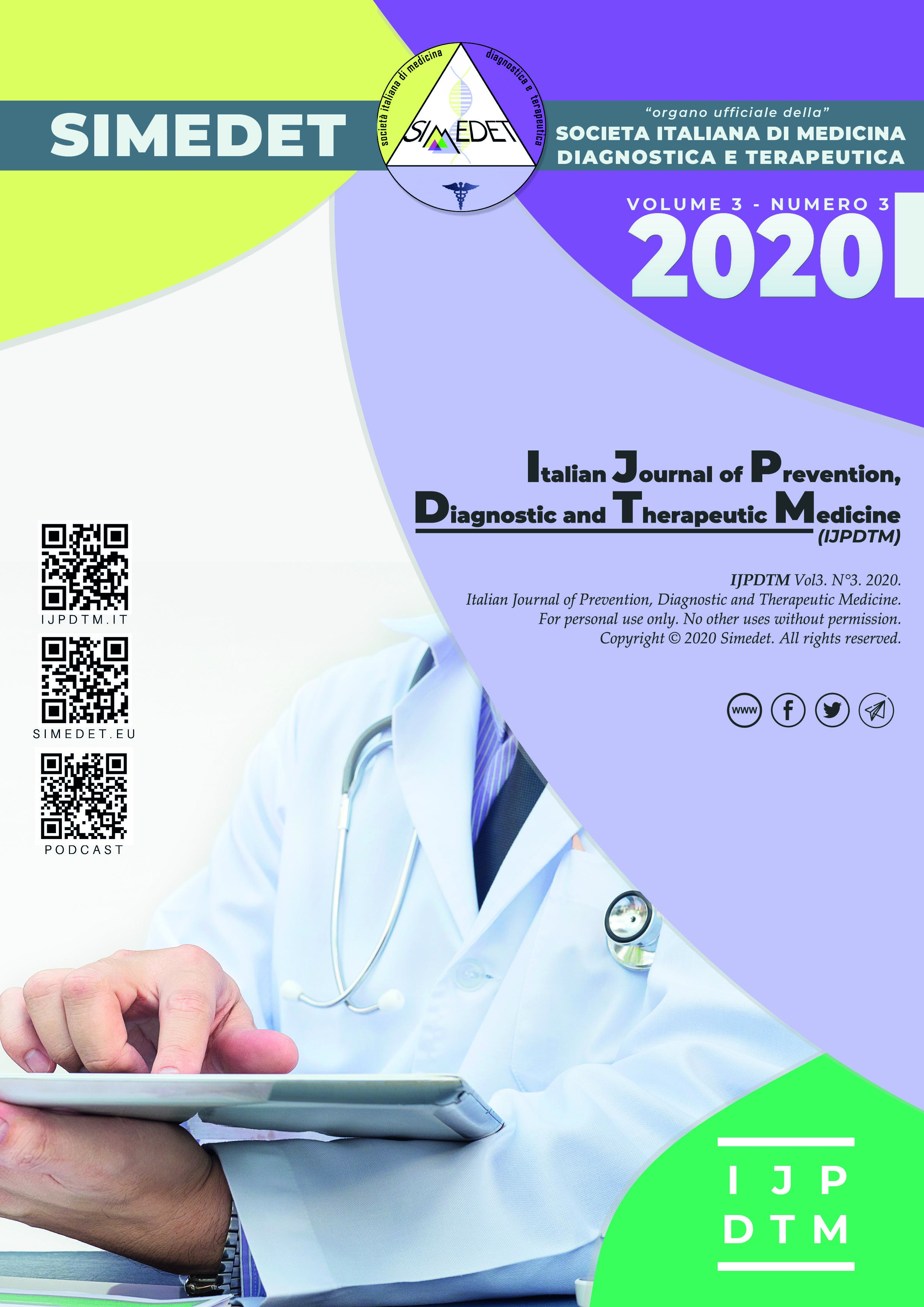Use of the self-assessment instrument c.a.r.m.in.a. in clinical risk management
Main Article Content
Abstract
Introduction. “C.A.R.M.In.A.” is a self-assessment and comparison tool applied to seven areas of interest in the management of clinic risk, measured by a survey with weighed standards.
Aim. The primary focus of the study is to explore areas provided for in C.A.R.M.In.A, with a self-assessment managed by the Coordinator and the Referent for Clinic Risk in the Local Health Authority. The aim is to map and identify the areas requiring a priority action and those with better levels of performance. This will allow to suggest actions aimed at improving the corporate performance.
Method. The study included three phases. First, after the activation of a training course, C.A.R.M.In.A. was administered to players. Then the data of C.A.R.M.In.A. have been studied. Finally the major areas and those with better performance were mapped, and improvement actions have been suggested.
Results: Eligible players’ voluntary participation to the study was 73%. Areas with greatest challenges in various structures were found to be area 1: Safety culture, and area 6: Management of adverse event and avoided event. In these two areas the lower standards refer to communication mode of adverse events in the patients and their relatives and their support and counseling. The ‘optimal’ areas are: area 4: Safe setting and context, area 7: Compilation and management of health records, and area 2: Communication.
Discussion. The results are in line with literature. Based on the results and in the light of examined literature, improvement actions have been planned. They are targeted to the current critical issues revealed by the study: Training on communication mode of adverse event, Simulation of cases, Enhancement of interpersonal/communication skills and Evolution of proactive courses and direct access to support and counseling of patient and relatives involved in the adverse event.
Conclusion. The program C.A.R.M.In.A. provides a basis of complete tests of all corporate risk influences and it has proved to be a useful tool in support of clinic governance activities.
Downloads
Article Details

This work is licensed under a Creative Commons Attribution-NonCommercial-NoDerivatives 4.0 International License.
References
Institute of Medicine – IOM “To err is human. Building a safer Health System” – 1999.
Schwendimann R, Blatter C, Dhaini S, Simon M, Ausserhofer D. The occurrence, types, consequences and preventability of in-hospital adverse events – a scoping review. BMC Health Services Research 2018; 18:521.
Portale sanità regione Veneto
https://salute.regione.veneto.it/web/gsrc/carmina
Tricarico P, Tardivo S, Sotgiu G, Moretti F, Poletti P, Fiore A et al. Clinical Assessment of Risk Management: an INtegrated Approach (CARMINA). International Journal of Health Care Quality Assurance. 2016; 29(7): 744-758.
Report MedMal Claims Italia 2018 di Marsh – Studio sull’andamento del rischio da medical malpractice nella sanità italiana pubblica e privata – 9° edizione.
Iedema R, Allen S, Britton K, Piper D, Baker A, Grbich C et al. Patients' and family members' views on how clinicians enact and how they should enact incident disclosure: the "100 patient stories" qualitative study. BMJ. 2011; 343: d4423.
Hågensen G, Nilsen G, Mehus G, Henriksen N. The struggle against perceived negligence. A qualitative study of patients' experiences of adverse events in Norwegian hospitals. BMC Health Serv Res. 2018; 18(1): 302.
Moore J, Bismark M, Mello MM. Patients' Experiences With Communication-and-Resolution Programs After Medical Injury. JAMA Intern Med. 2017; 177(11): 1595-1603.
Duclos CW, Eichler M, Taylor L, Quintela J, Main DS, Pace W et al. Patient perspectives of patient–provider communication after adverse events. Int J Qual Health Care. 2005; 17(6): 479-86.
Ministero della Salute. Sicurezza dei pazienti e gestione del rischio clinico: Manuale per la formazione degli operatori sanitari.
Prothero MM, Morse JM. Eliciting the Functional Processes of Apologizing for Errors in Health Care: Developing an Explanatory Model of Apology. Glob Qual Nurs Res. 2017; 4: 1-9.
Etchegaray JM, Gallagher TH, Bell SK, Sage WM, Thomas EJ. Error Disclosure Training and Organizational Culture. Advances in Patient Safety and Medical Liability. Agency for Healthcare Research and Quality. 2017; 17.
Lamiani G, Anania S. Sbagliare è umano, ma anche in medicina? La comunicazione degli errori ai pazienti e ai familiari. Ricerche di Psicologia. 2015; 3: 527-543.
Gallagher TH, Etchegaray JM, Bergstedt B, Chappelle AM, Ottosen MJ, Sedlock EW et al. Improving Communication and Resolution Following Adverse Events Using a Patient-Created Simulation Exercise. Health Serv Res. 2016; 51(3): 2537-2549
Ministero della Salute. Linee guida per gestire e comunicare gli Eventi Avversi in sanità. Roma. 2011.

